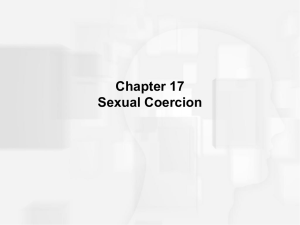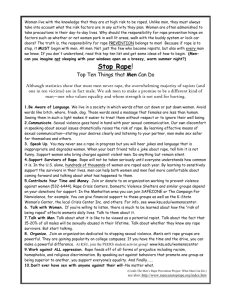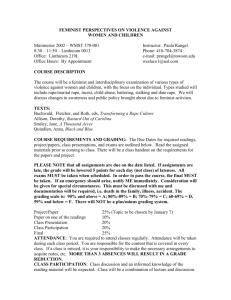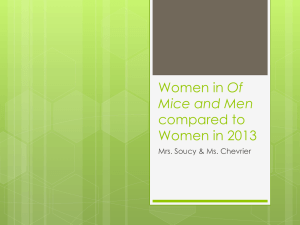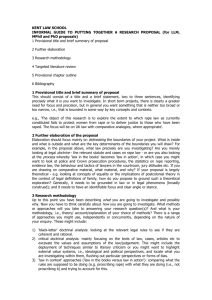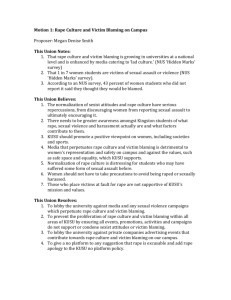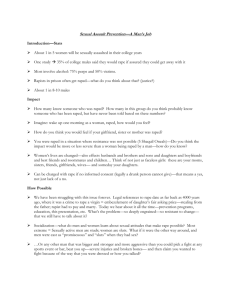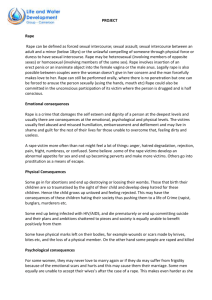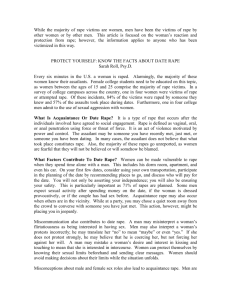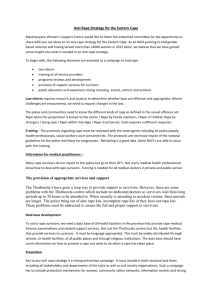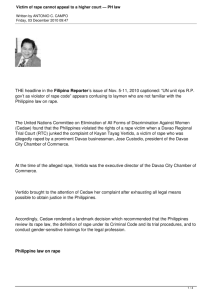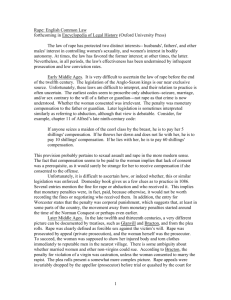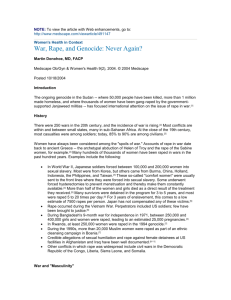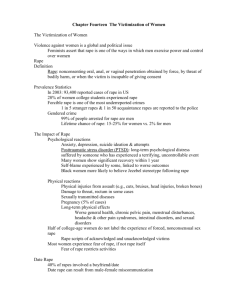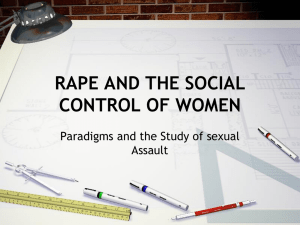WS-50A-Handout-of-Terms-Lecture-4
advertisement
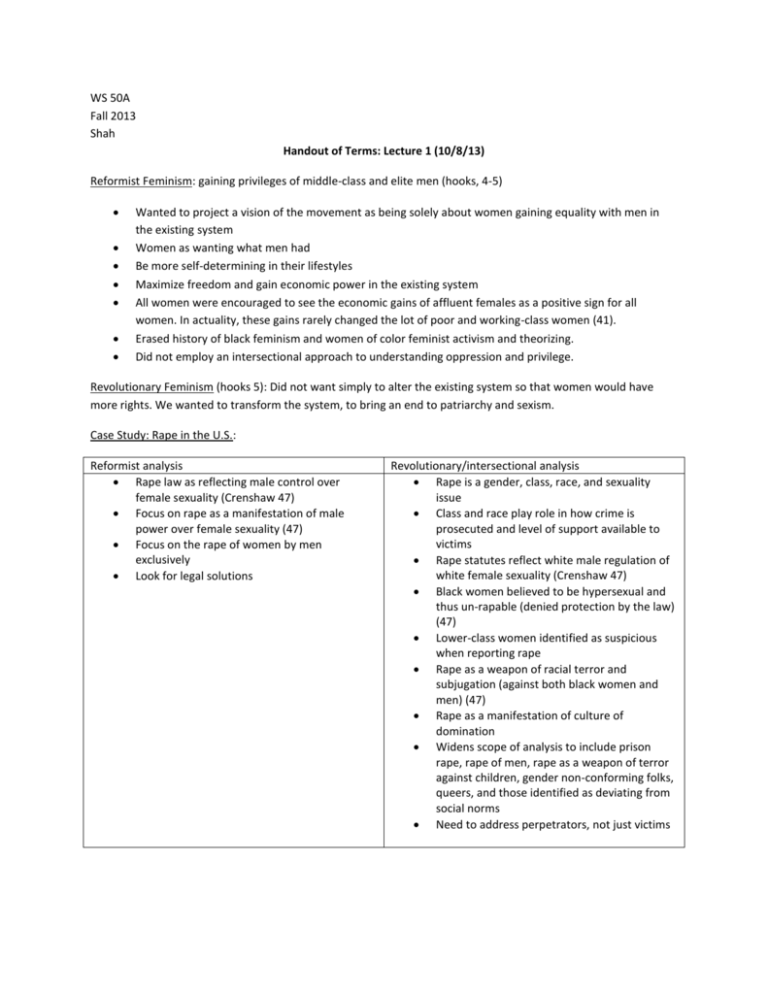
WS 50A Fall 2013 Shah Handout of Terms: Lecture 1 (10/8/13) Reformist Feminism: gaining privileges of middle-class and elite men (hooks, 4-5) Wanted to project a vision of the movement as being solely about women gaining equality with men in the existing system Women as wanting what men had Be more self-determining in their lifestyles Maximize freedom and gain economic power in the existing system All women were encouraged to see the economic gains of affluent females as a positive sign for all women. In actuality, these gains rarely changed the lot of poor and working-class women (41). Erased history of black feminism and women of color feminist activism and theorizing. Did not employ an intersectional approach to understanding oppression and privilege. Revolutionary Feminism (hooks 5): Did not want simply to alter the existing system so that women would have more rights. We wanted to transform the system, to bring an end to patriarchy and sexism. Case Study: Rape in the U.S.: Reformist analysis Rape law as reflecting male control over female sexuality (Crenshaw 47) Focus on rape as a manifestation of male power over female sexuality (47) Focus on the rape of women by men exclusively Look for legal solutions Revolutionary/intersectional analysis Rape is a gender, class, race, and sexuality issue Class and race play role in how crime is prosecuted and level of support available to victims Rape statutes reflect white male regulation of white female sexuality (Crenshaw 47) Black women believed to be hypersexual and thus un-rapable (denied protection by the law) (47) Lower-class women identified as suspicious when reporting rape Rape as a weapon of racial terror and subjugation (against both black women and men) (47) Rape as a manifestation of culture of domination Widens scope of analysis to include prison rape, rape of men, rape as a weapon of terror against children, gender non-conforming folks, queers, and those identified as deviating from social norms Need to address perpetrators, not just victims A third definition of feminism (Myra Marx Ferree): Feminism is a political and social process, a target for social change and justice. Challenges all of gender relations by addressing those norms and processes of gender construction and oppression that differentially advantage some women and men relative to others. Feminism as a goal can be adopted by individuals of any gender. Essentialism: A belief that human behavior is “natural,” predetermined by genetic, biological, or physiological mechanisms and thus not subject to change; or the notion that human behaviors which show some similarity in form are the same, an expression of an underlying human drive or tendency. (Carole Vance) Modernity: A term that scholars use to refer to the historical, cultural, political, and economic conditions related to the Enlightenment (18th c.); the rise of industrial society and scientific rationalism; and to the idea of controlling nature through technology, science, and rationalism. Female “Sex” Traits and Gender Behaviors: Female “sex” traits: Smaller brain size Late 19th c.: bones, blood vessels, cells, hair, and brains sexualized Womb Clitoris Ovaries Feminine Gender Behaviors: Inferior intelligence More susceptible to environment, more emotional, more empathetic, less able to rationally handle emotions Built for reproduction, nurturing, weak, incapable of hard labor Prone to hysteria Incapable of handling sexual urges “Nonnormative femininity became associated with perversion, marginality, and nonreproductive sex and increasingly came to be seen as a pathology” (Inderpal Grewal and Caren Kaplan) Relationship of sex, gender, and sexual orientation (19th c.): Man is unique by virtue of access to morality, cultural civilization Civilization increases advantage of some cultures over others The characteristic feature of civilization is sexual selection; that is, the successful reproduction of the “fittest” Demands sexual dimorphism in nature Secondary sexual characteristics (gendered behaviors) are needed for successful reproduction – only visible in “higher species and societies” 2 sex/2 gender model; Heterosexuality emerges as a social prerequisite and the “homosexual” as an identity



